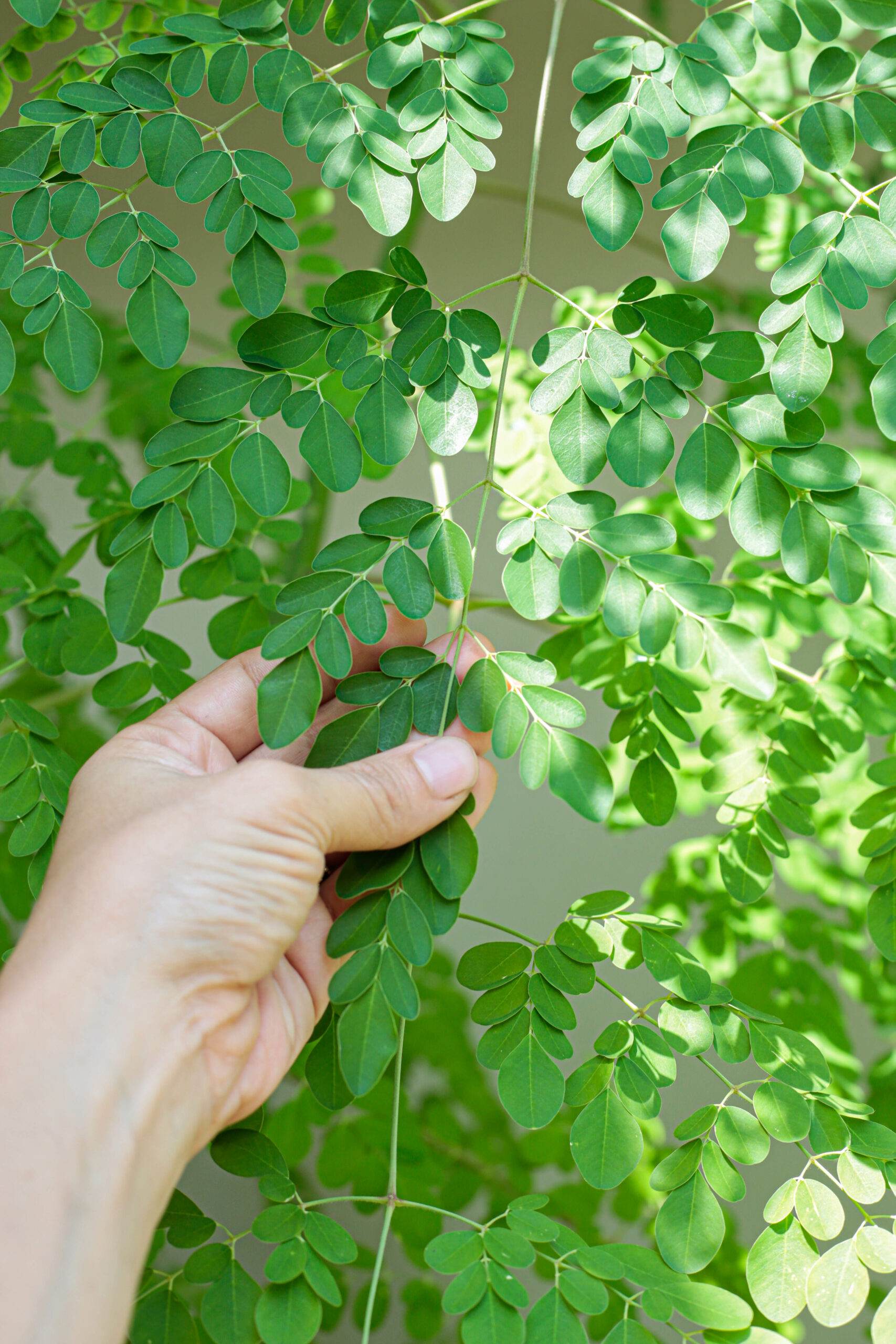
I have never grown a more easy plant than the Moringa!
Its called the “healthiest plant” and grows wildly abundant. In one year, it can grow up to 22 feet or 7 meters if you let it! Its a heat-loving plant, and sub-tropical cultures all around the world in South America, Africa and Asia have a long relationship with moringa, and cook with the leaves.
A little moringa in your food and skincare – adds a HUGE boost of nourishment!
In this article, we’re going to prepare and preserve fresh Moringa to be used topically to nourish your skin. We’ll talk about the benefits and how to use it.
Benefits of Moringa for Skincare
As an herbalist, I don’t really seperate what’s good for your body and what’s good for your skin. In my world, we’re consuming whole foods, inside and out. The skin is your largest organ – and it requires nutrients from food to create healthy cells, to heal and function optimally.
The difference with “feeding” the skin, is in how we prepare the ingredients. I’lll show you that in detail below.
First, let’s take a look at the benefits Moringa Leaf for your skin (and body).
Click below to read more on each:
Anti-oxidant, Anti-inflammatory, Anti-microbial, Nutritive
Antioxidants help the skin better respond to stress with resilience.
Anti-inflammatory and Anti-microbial are important for skin that is healing, for clearing breakouts, and preventing infection.
Nutritive herbs provide high amounts of nutrient to the body
Moringa has a high content of chlorophyll, which on the skin has a protective and anti-inflammatory effect. It also acts as a purifier, cleansing and releasing toxins in the skin.
Chrolophylll is very good for all skin types, but especially good for skin experiencing acne and breakouts. And for those who live and work in environments where there is toxin or pollution in the air.
A natural retinol that helps to promote healhty skin regeneration and slow down the signs of aging. Many anti-aging products on the market are made with an isolate of retinol which can be harsh and aggravating to the skin. Vitamin A, as part of a complete whole-food packet of nutrients, is very gentle and can be used daily in your skincare.
Vitamin C is a very important skincare nutrient – it helps to promote collagen. It brightens the skin and helps to prevent hyperpigmentation.
Vitamin C is very fragile, and can be lost in the drying process. If your goal in using Moringa leaf is to help create brighter, even skin tone, make sure to dry the leaves in a very low temperature.
You can also use fresh moringa, and prepare a fresh skincare mask. Remember that vitamin C is water soluble – you might blend fresh moringa with avocado, and a little water to draw out the vitamins.
Another option, is to infuse fresh Moringa into witch hazel, and create an herbal extract or tincture for your skin. You can then apply this green-tinted witch hazel over areas where you have hyperpigmentation.
Moringa is wildly rich in minerals, including magnesium, calcium, sulfur…
Minerals are the building blocks of healthy cells, and help with the processes of the skin and in retaining hydration. To benefit from minerals topically, you might want to create a moringa bath. Blend dried moringa into epsom salts and soak in the dark green, mineral rich waters!
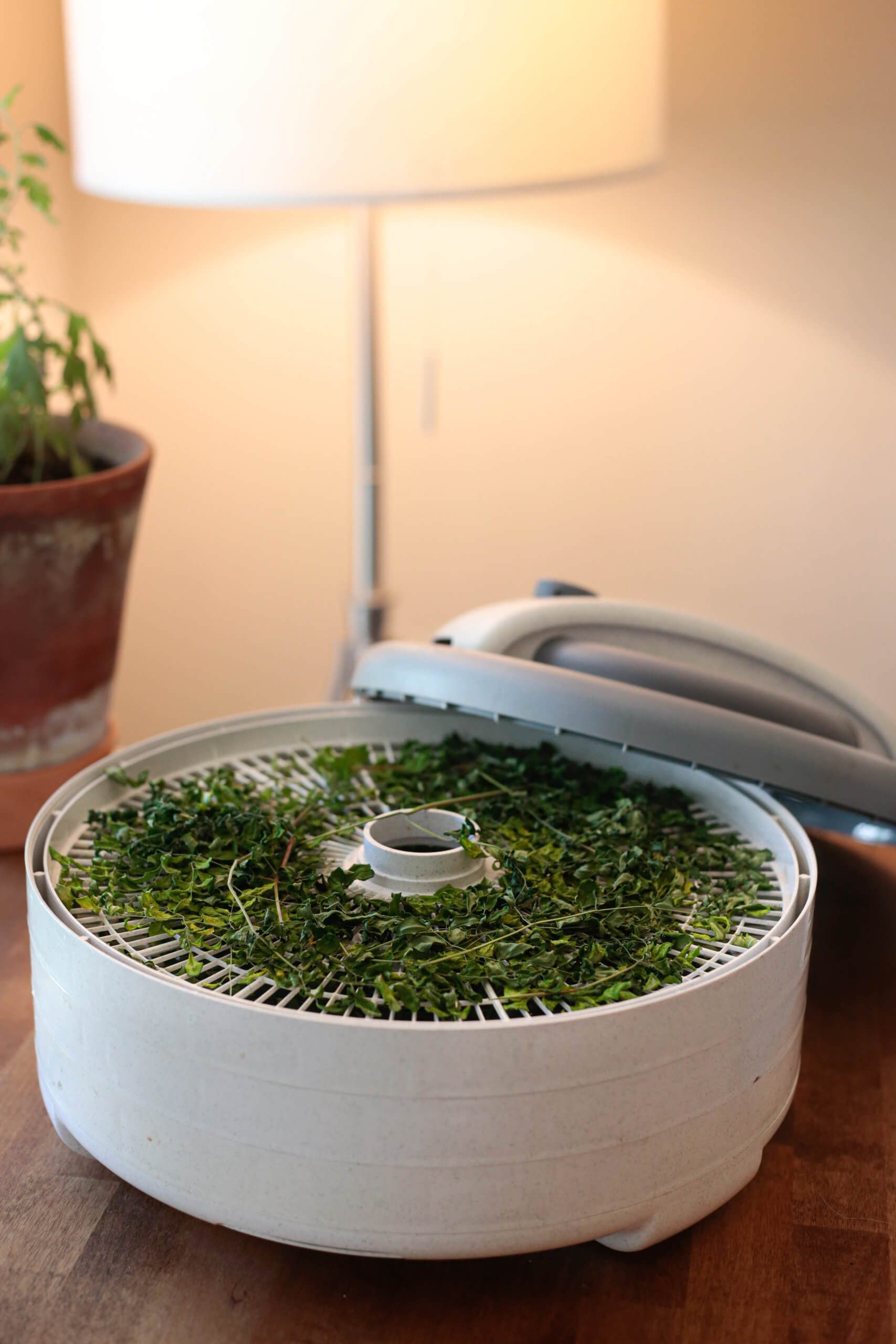
To preserve the Moringa leaves, you want to dehydrate it and remove all the water content.
You can do this it in a slightly warm oven – but I always forget to check – and have burned too many things. So I use a dehydrator. This is the model that I use, its not fancy or expensive but it does the job.
If you plan to preserve food regularly and make skincare, a dehydrator is a worthwhile investment. I wrote a comprehensive buying guide that you can read here.
Dehydration Method: Haphazardly fill the trays with Moringa stalks (its totally fine if it overlaps) Set to (95 F / 35 C) for about 4-6 hours, or until totally dry.
This low-and-slow method removes the water content, but helps to preserve the nutrients.
Paper Bag Method: Or, you can place fresh Moringa leaves in a paper bag and let it sit in a dry area until it becomes crispy dry. If you do this method, remove the thick stalks, and only dry the leaves so that it all dries evenly.

Creating Moringa Powder from Dried Moringa Leaves
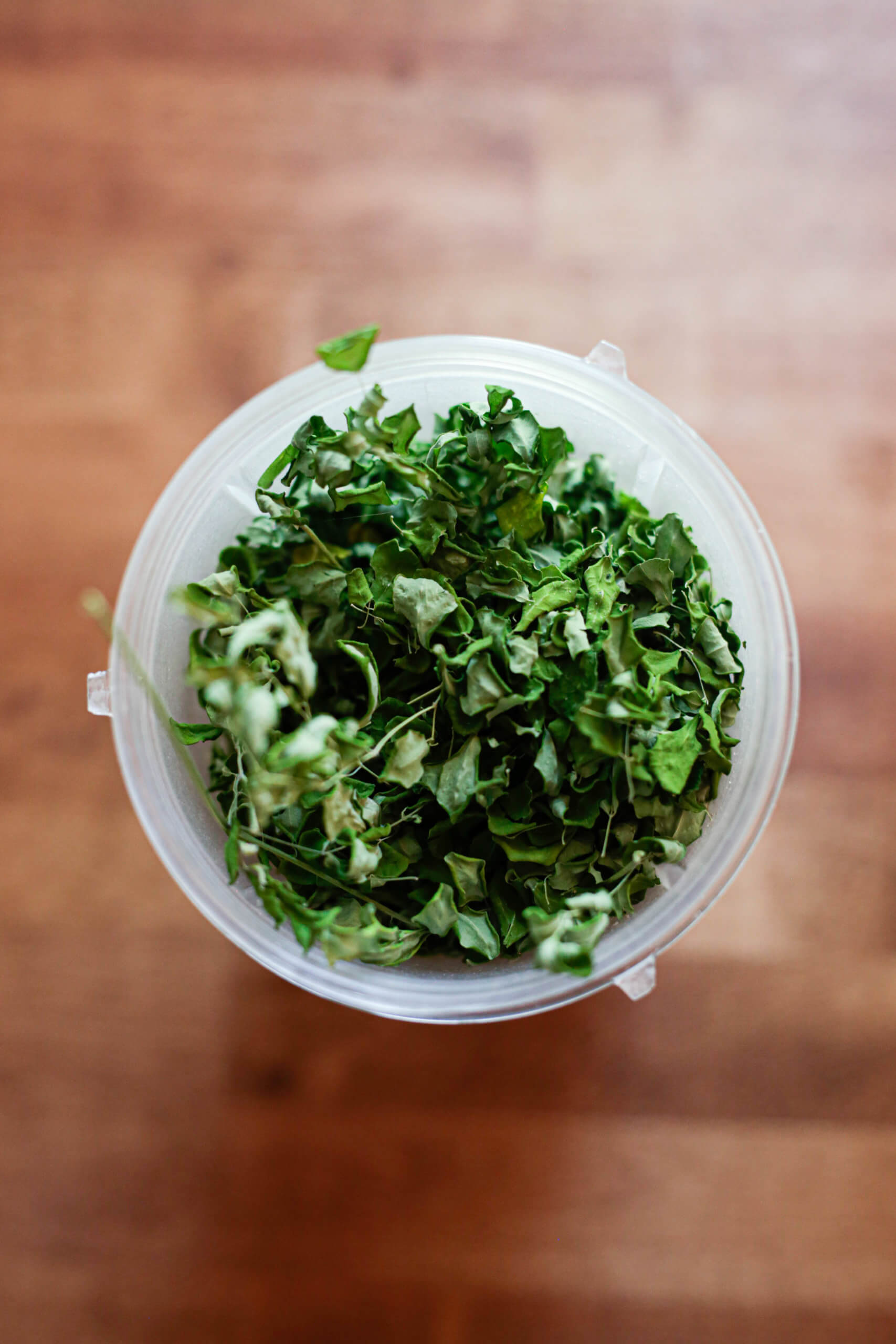
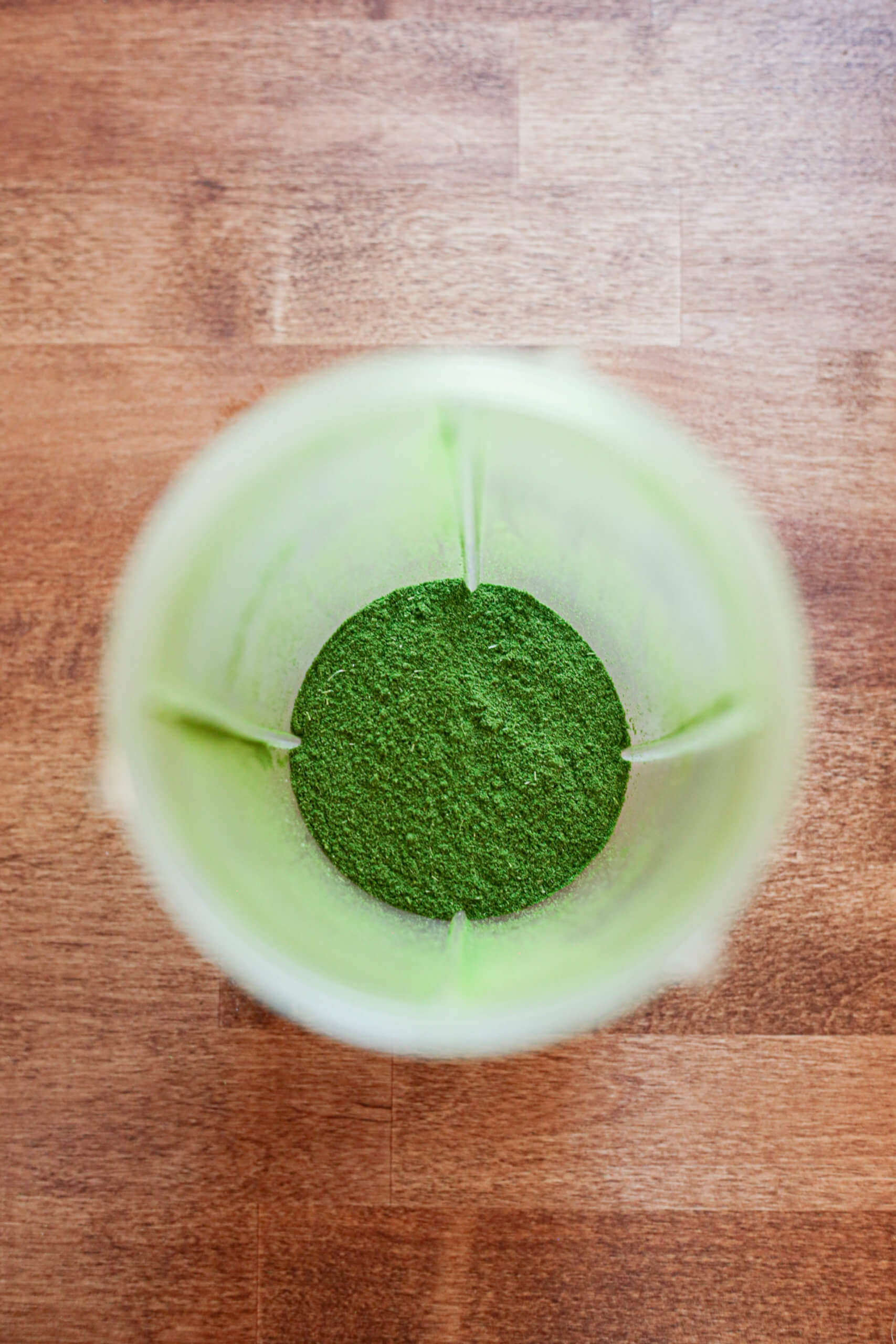
Once the leaves are dried, you can blend it in a blender into the most vibrant green powder – blasting open the cells walls of the plant, and making the nutrients available for your skin.
You do need to store it carefully, as more of the surface area is exposed to oxygen it can begin to degrade more quickly. Powders generally have a shelf life of 6 months.
I recommend that you keep it in the freezer, where it will stay bone dry, vibrant and fresh.
Powdering Method: If you haven’t already, remove the stems. They’re so fibrous, like strands of thread, and do not powder easily at all! Toss the leaves into a blender, bullet blender or coffee grinder (that you don’t use for coffee) and blend until powdery fine.

I’m taking a recipe from my book, Super Greens Powder Mask – but using our freshly made Moringa powder instead! Its smart to use the recipes in the book as a base – and play with the ingredients! Check out the book here.
RECIPE USING MORINGA POWDER
To address hyperpigmentation and aging skin – I would add Moringa powder to the Vitamin C Mask which is a recipe that you can find in my book Natural Homemade Skincare, pg 94.
Rich in protein, vitamins and minerals…. moringa is amazing for healhty hair growth! You might infuse moringa leaves into a plant oil or apple cider vinegar and make hair treatments.
Here today, I’m leaning on the purifying. brightening and nutritive qualities of Morniga to make a powdered cleanser that you can also wear as a mask. I’ve been using this blend recently, and my skin looks much brighter, it feels smoother in texture and softer!
You could even make a large batch of this powdered blend, and scoop it into a bath with sea salts or epsom salts for a purifying, mineral rich soak. This would be especially good if you’re treating the whole body, or addressing body acne
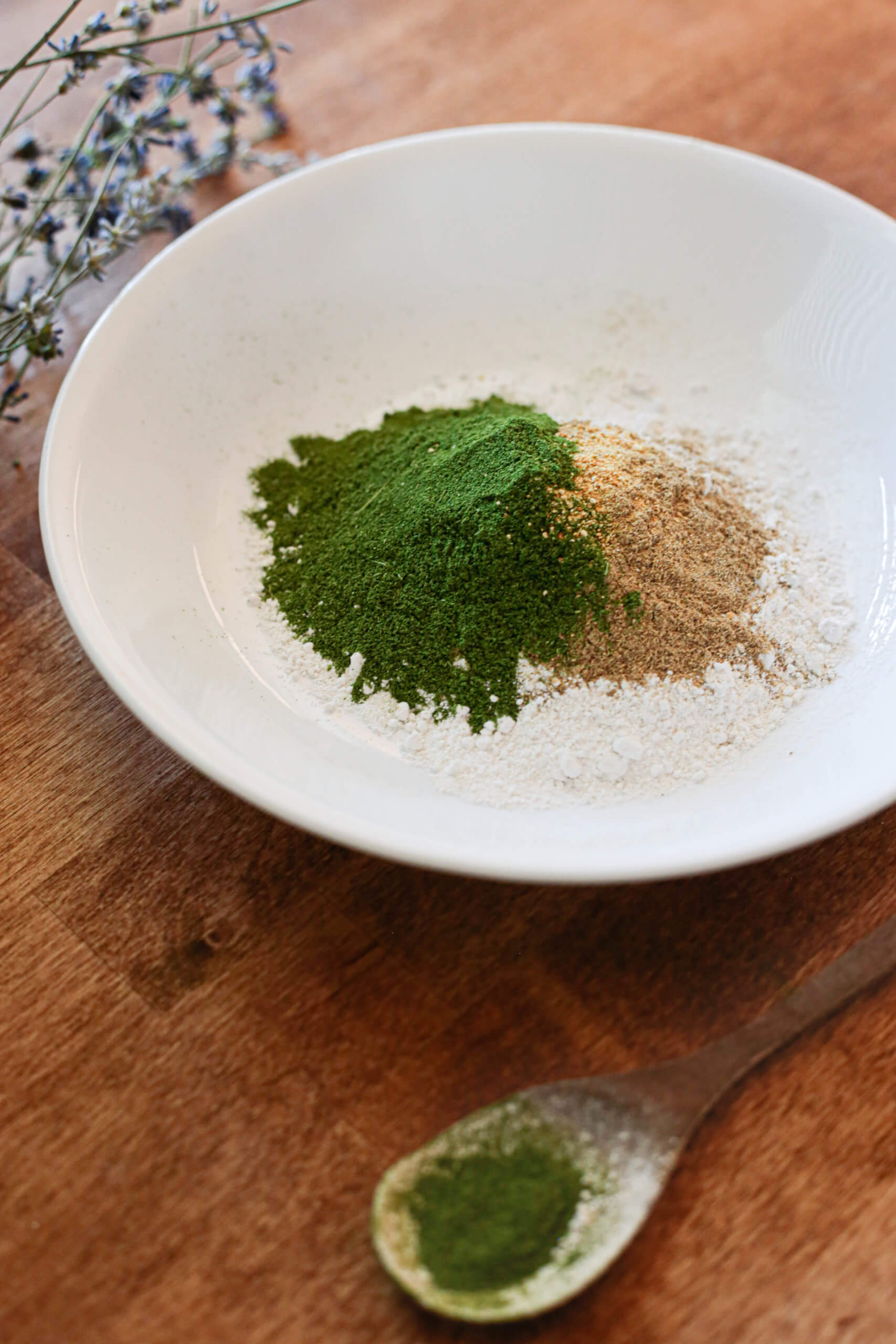
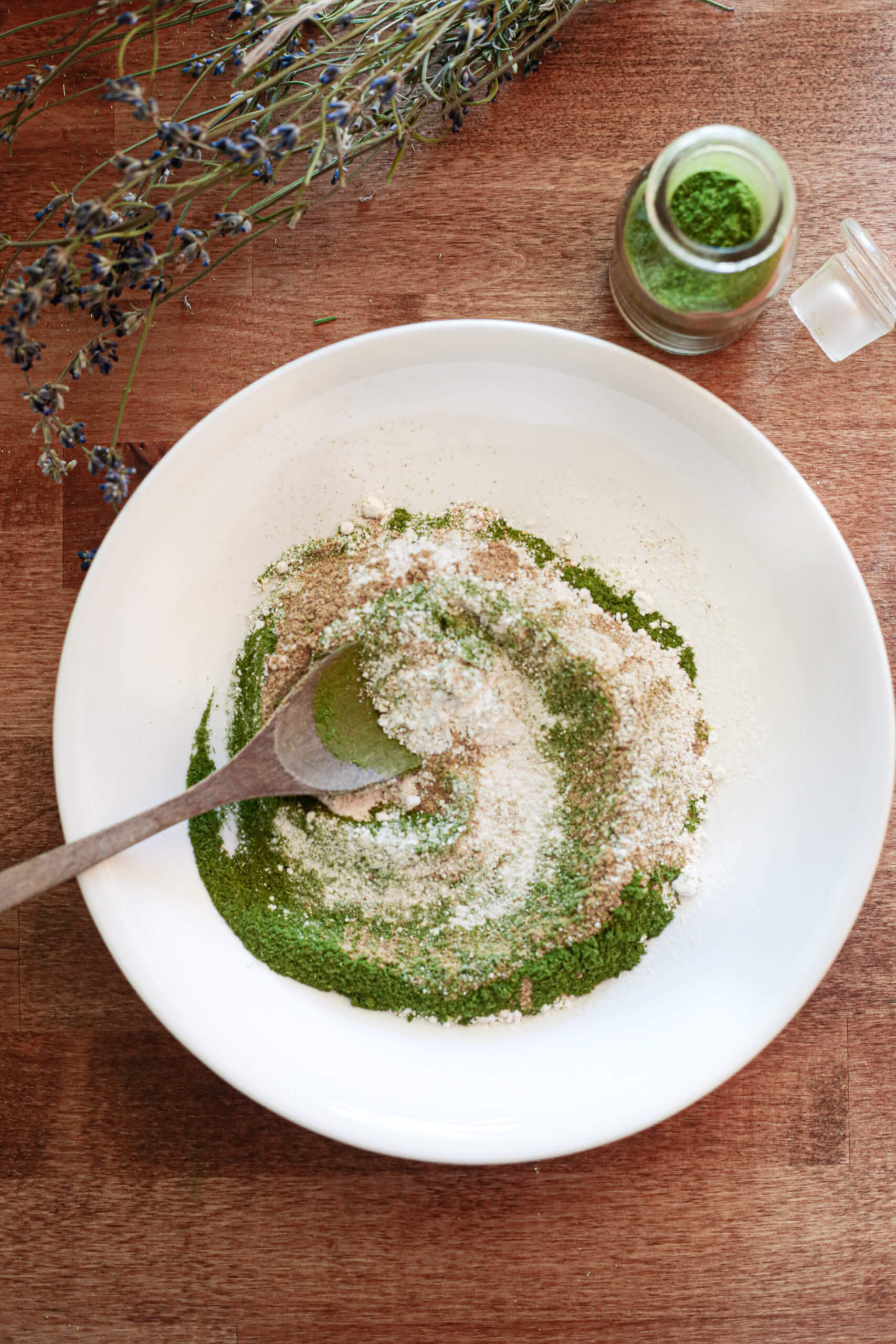
Sweet Moringa Cleansing Mask
Ingredient Spotlight:
- Moringa: helps clear impurities from the skin, promote healthy regeneration and bright complexion. Great for all skin types, and for acneic conditions.
- Licorice Root: rich in saponins, makes a good natural cleanser. Helps to even out skin tone. The “sweet” in the name, licorice root has a sweet taste, like sugar! Sweet tasting herbs strengthens and nourishes your skin’s vitality.
- Kaolin Clay: gentle clay that gently stimulates, deeply cleanses and brightens the skin.
Ingredients:
In parts, which means it can be teaspoons, tablespoons, cups, grams…
- 1 part Moringa Powder
- 1 part Licorice Root Powder
- 1 part Kaolin Clay
Directions:
- Blend all of the powders together
- Store in a container, for 3-6 months. No need to refridgerate
- To use: scoop out 1 tablespoon. In the palm of your hand or in a bowl, compbine with dropletes of water to form a creamy consisency.
- Apply onto your skin. Leave it on until the clay just begins to dry, about 5 mintues. If you want to leave it on longer 15-20 minutes as a mask – keep misting your skin with water or rose water to keep the mask damp.
- Wet your fingers and in a circular motion, begin to massage, gently exfoliating your skin
- Rinse off with water and follow immediately with drops of plant oil to seal it all in.
- Feel your skin – I bet it feels amazing!!


One response to “How to Prepare Fresh Moringa for Skincare – and why you want to!”
Thanks for sharing this well-researched article on Moringa. I learned a lot about Moringa from another blog on iahas.com . I will add your blog to my list.
Keep posting great stuff!